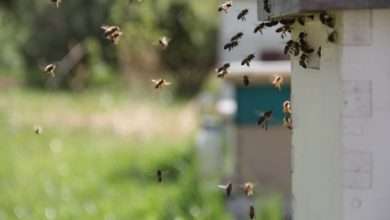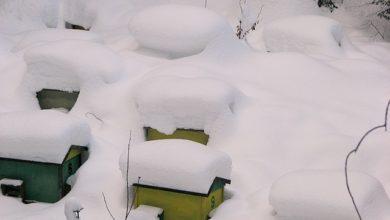Why Bees Build Hexagonal Cells: The Ingenious Structure Explained
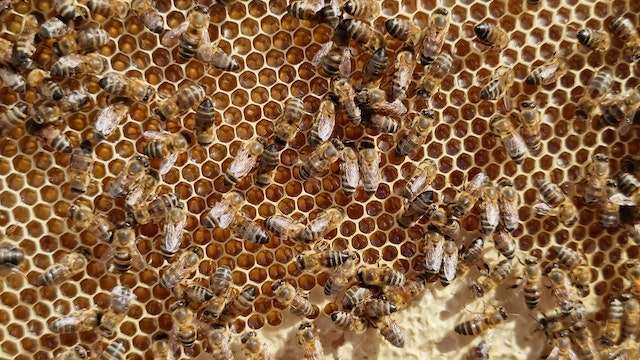
Have you ever marveled at the intricate design of a beehive? The perfectly aligned hexagons, forming the golden honeycomb, are a sight to behold. But have you ever wondered why bees construct their hives in such a unique shape?
In this article, we will delve into the fascinating reasons behind this hexagonal wonder and explore the ingenious methods employed by these industrious insects.
Evolution of Beehives
Overview of early beehive designs
Throughout history, humans have been captivated by the fascinating world of bees and their intricate abodes. From ancient times, different civilizations have crafted beehives to attract and cultivate honeybees. The evolution of beehive designs is a testament to our relentless pursuit of understanding and harnessing the remarkable capabilities of these industrious insects.
Early beehive designs were rudimentary yet effective in providing shelter for bees and access to their precious honey. One of the earliest known beehive designs was the skep, a simple domed structure made from plaited straw or twigs. Skeps allowed bees to construct their combs freely without any predetermined frames, providing a natural environment for them to thrive.
Discovery of hexagonal shape preference in beehive construction
As our knowledge about bees and their behaviors expanded, so did our understanding of the optimal beehive design. In the mid-17th century, a scientific breakthrough occurred when the English astronomer and mathematician, Sir Christopher Wren, observed the incredible consistency of hexagonal cell construction within beehives. This discovery laid the groundwork for future investigations into the evolutionary advantages of this particular shape.
The Hexagonal Enigma
It is a universally known fact that every single cell within a beehive is shaped as a six-sided hexagon. This consistent pattern begs the question of why bees exclusively choose this particular shape. As it turns out, there is a method to their architectural preferences.
The Puzzle of Perfect Fit
The hexagonal shape of the honeycomb serves a crucial purpose – it allows the individual cells to perfectly interlock, just like a meticulously solved puzzle. This seamless integration is essential to the hive’s functionality.
These hexagonal recesses serve as the cradles for the queen bee’s precious eggs, while simultaneously serving as convenient storage units for pollen and honey collected by the diligent worker bees. Had the shape of the honeycomb been composed of minuscule circles, it would have resulted in unwelcome gaps, compromising the structural integrity and functionality of the hive.
The Ingenious Structure of Hexagonal Cells
Here, we will provide an informative analysis of hexagons, their unique properties, the mathematical efficiency they offer in forming beehives, and a comparison with other shapes and their limitations.
Description of Hexagons and Their Unique Properties:
Hexagons are six-sided polygons with straight sides and angles. What makes them exceptional is their ability to efficiently cover space while minimizing the amount of material used. Hexagonal cells in a beehive are perfectly formed, each with three pairs of parallel sides and congruent interior angles, allowing them to fit snugly together without leaving any gaps.
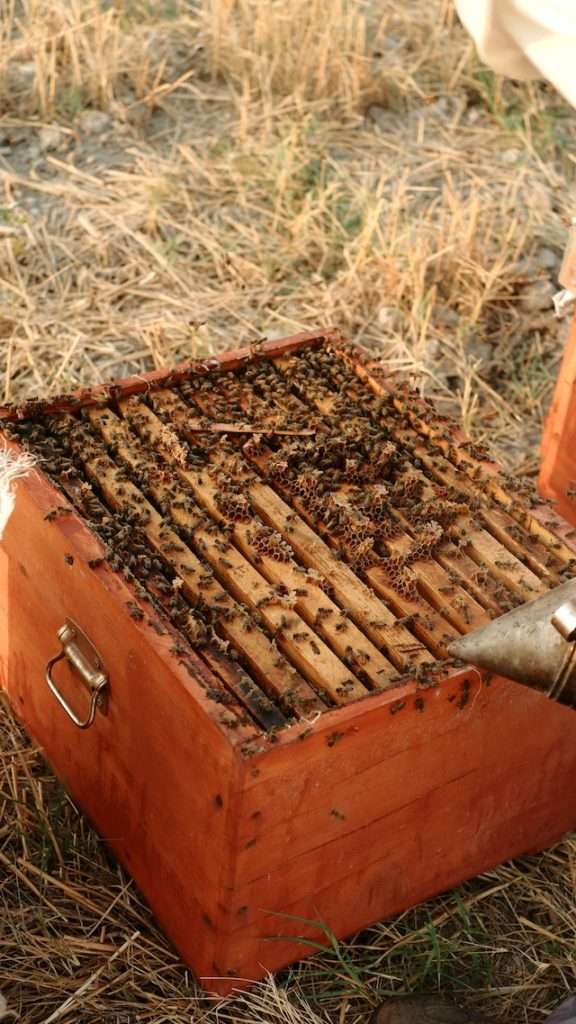
The unique properties of hexagons can be attributed to their optimal division of space. Compared to other regular shapes, such as squares or triangles, hexagons have the smallest perimeter-to-area ratio. This means that they encompass the most interior space while using the least amount of building material. Bees instinctively capitalize on this mathematical efficiency when constructing their honeycomb.
Mathematical Efficiency of Hexagons in Forming a Beehive:
The structure of a beehive is a marvel of engineering, and the hexagonal cells play a crucial role in its overall efficiency. Bees have evolved over millions of years to adopt this hexagonal shape because it offers several advantages.
- Maximum Storage Capacity: The hexagonal shape of the cells allows bees to store the maximum amount of honey and pollen with minimal wasted space. The interior space is maximized, providing enough room for bees to store food, brood (developing larvae), and accommodate the growth of the colony.
- Optimal Use of Wax: Bees produce beeswax to construct their honeycombs, expending a significant amount of energy in the process. The hexagonal shape enables bees to create strong, stable, and lightweight cells using the least amount of wax possible. This optimum utilization of resources ensures efficient use of the colony’s energy and allows the bees to focus on other essential tasks.
- Structural Integrity: Hexagonal cells offer inherent structural stability due to their interconnectedness. The bees’ lateral and vertical alignment of the cells within the honeycomb provides enhanced support to the entire structure. This arrangement prevents sagging and collapsing of the comb, even with the weight of stored honey and developing larvae.
Comparison with Other Shapes and Their Limitations:
While hexagonal cells prove to be the ideal choice for constructing beehives, other shapes come with their own limitations in terms of efficiency and stability.
- Square and Rectangular Cells: Building honeycombs with square or rectangular cells would require more material compared to hexagons. The interior spaces would have wasteful gaps, reducing the overall storage capacity and necessitating additional energy and resources from the bees for construction.
- Triangular Cells: Although triangles are the simplest polygonal shape, they do not efficiently fill the space like hexagons. The angles and sides of triangles would create uneven gaps, ultimately reducing the storage capacity within the beehive.
- Circular Cells: While circles are mathematically efficient in terms of perimeter-to-area ratio, they do not tessellate or fit together seamlessly, leading to wasteful gaps between cells. Bees would need to use more wax, resulting in unnecessary energy expenditure.
Benefits and Functions of Hexagonal Hives
The unique geometry of hexagonal cells offers several benefits and functions that enhance the efficiency and productivity of a bee colony.
Optimal Space Utilization for Honey Storage and Brood Rearing:
One of the key advantages of hexagonal hives is their ability to maximize space utilization for honey storage and brood rearing. Hexagons tessellate perfectly, allowing bees to construct their cells with minimal gaps between them. This design ensures that no space is wasted, as every cell fits snugly against its neighbors.
The hexagonal pattern provides an efficient honeycomb structure, enabling bees to store larger quantities of honey and pollen within the given hive space. Moreover, hexagonal cells provide ample room for the queen to lay her eggs, allowing for the expansion of the brood and the growth of the colony.
Strength and Stability of Hexagonal Structure:
The hexagonal structure of the honeycomb exhibits remarkable strength and stability. Hexagons possess inherent structural integrity due to the even distribution of forces along their sides. The angles formed in a hexagon are 120 degrees, and this uniform distribution of angles enables each cell to share the load with its neighboring cells. As a result, hexagonal hives can withstand considerable weight without collapsing, providing a secure environment for the bees to thrive.
The robustness of the hexagonal design ensures the longevity and structural integrity of the hive, even under challenging conditions.
Improved Thermoregulation within the Hive:
Efficient thermoregulation is vital for the survival and well-being of a bee colony. Hexagonal hives excel in maintaining optimal temperature control within the hive. The structure of hexagonal cells allows bees to evenly distribute heat throughout the honeycomb, ensuring a consistent and favorable environment for the brood and adult bees.
The small size of each cell reduces heat loss, while the bees’ collective movement facilitates circulation, helping to regulate temperature fluctuations effectively. By utilizing hexagonal hives, beekeepers can foster a thermally stable environment, minimizing stress on the colony and enhancing its productivity.
The Unyielding Brilliance of Bees
In conclusion, the ingenious structure of hexagonal cells in bee hives is nothing short of remarkable. Through millions of years of evolution, bees have perfected the art of building hexagonal hives that offer a multitude of benefits and functions.
Firstly, the mathematical efficiency of hexagons in forming a beehive is truly fascinating. Bees, with their innate understanding of geometrical principles, have discovered that hexagons maximize space while minimizing materials. By utilizing this six-sided shape, bees are able to build the most compact and resource-efficient living quarters. This not only saves them precious energy but also allows for a larger population of bees within the hive.
Furthermore, the incredible benefits derived from hexagonal hives cannot be overlooked. The hexagonal cells provide exceptional structural stability, ensuring the hive remains intact even in the face of external pressures or changes in weather conditions. Additionally, the hexagonal shape allows for a better distribution of weight, preventing any one cell from bearing excessive load. This strategic design ensures the longevity and survival of the hive.
Moreover, hexagonal hives offer optimized storage and organization capabilities. The uniform shape and size of the cells allow bees to store their precious honey and pollen efficiently. It also facilitates the easy movement of bees within the hive, creating a harmonious workflow necessary for a thriving community.
In conclusion, the remarkable ingenuity behind why bees build hexagonal hives lies in the mathematical efficiency, multitude of benefits, and functional superiority they provide. From maximizing space to ensuring stability and facilitating organization, the hexagonal structure embodies nature’s brilliance at its finest. As we continue to marvel at the wonders of the natural world, let us be inspired by the tiny architects known as bees and the extraordinary structures they create.
FAQ’s
Why Hexagons in Beehives?
- Hexagons possess attributes that make them superior to other shapes. Firstly, their six equal sides allow for a more even distribution of weight and stress. This symmetrical balance prevents any weak points, fortifying the overall structure.
- Moreover, hexagons contain the largest area-to-perimeter ratio among all regular polygons. As a result, bees can store and house more honey and eggs within the limited confines of their hives.
How do bees achieve such precision in their construction?
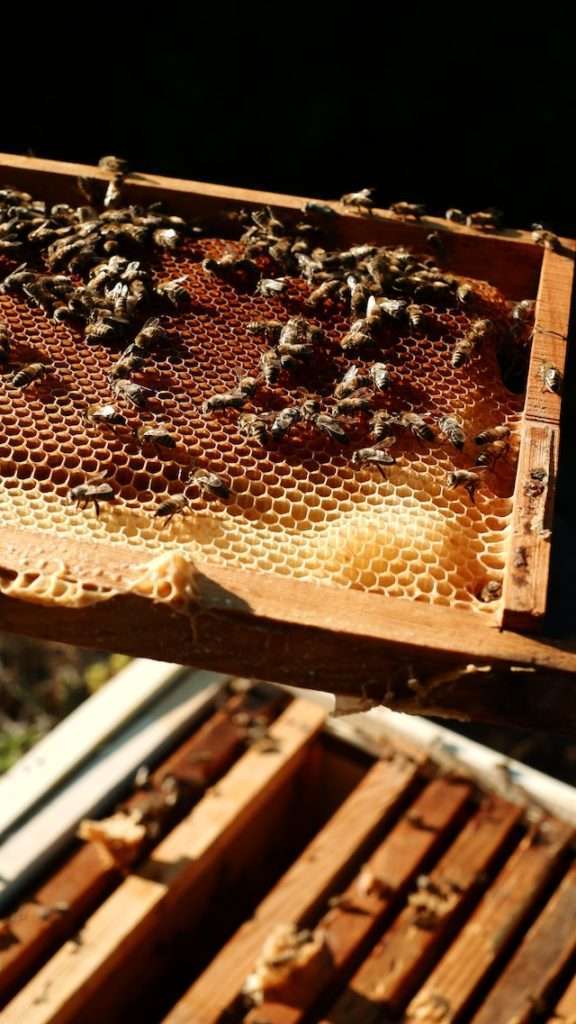
- The process begins with worker bees producing wax within their own bodies. They then meticulously shape and mold the liquid wax, using their mandibles and legs, into the remarkable hexagonal structures we observe. This intricate craftsmanship showcases the exceptional intelligence and adaptability of these amazing creatures.
Are hexagonal hives only found in honeybees?
- No, honeybees are not the only species that build hexagonal hives. Various species of solitary bees and even some wasps also construct hexagonal nesting structures. This indicates the prevalence and effectiveness of hexagons in nature.
Do hexagonal cells vary in size?
- Hexagonal cells within bee hives have a uniform size. This consistent size is crucial for maintaining structural integrity and ensuring bees can densely pack the cells for efficient use of space.
Why is the hexagonal shape more efficient than other shapes?
- Hexagons possess the most efficient packing of cells, allowing bees to minimize the amount of construction material required while maximizing storage capacity. Unlike other shapes, such as squares or circles, hexagons share walls with adjacent cells, increasing structural strength and space utilization.
Can bees build other shapes besides hexagons?
- Although bees are capable of building other shapes, such as octagons or squares, they naturally prefer hexagonal cells due to their inherent efficiency. Research has shown that bees will choose to construct hexagons even when provided with alternatives, further highlighting the advantages of this shape.
Are hexagonal cells stronger than cells of other shapes?
- Yes, hexagonal cells provide superior structural strength compared to cells of other shapes, such as squares or triangles. The sharing of walls between hexagonal cells enhances stability and prevents sagging or collapse, ensuring the integrity of the hive even under substantial weight or force.
How do bees maintain the hexagonal shape of their cells?
- Bees maintain the hexagonal shape by continuously monitoring and repairing their cells. Filling in gaps and reinforcing weak spots with additional beeswax, bees ensure that the hexagonal structure remains intact, maintaining the efficiency and strength of the hive as a whole.
